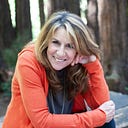Member-only story
Midlife Women Are Reclaiming Their Time
It’s time to change the narrative about the prime of our life
I was in my late 40s and about to divorce for the second time when I had a heart-to-heart talk with my mother about marriage and motherhood.
Was there anything she regretted, I asked.
“Yes,” she said in her Romanian accent, still thick despite having left her native country decades earlier, a concentration camp survivor who’d been orphaned at age 16 in the Holocaust.
“I wish I had an affair on your father.”
That was not what I had expected to hear.
My mother was in her early 70s then and still a stunning woman. For all I knew, my father, whom she married a week before her 21st birthday, was the only man she’d had sex with. I knew that my mother was not the only woman my father had sex with, including at least two during their 61-year marriage.
I am sure she had opportunities — with a sly smile she admitted to having “a chance” — especially since she had been basically living on her own. She had left our New York City home, bought a condo in Miami, where my sister was living, got herself a job and created a life for herself independent of my father. They lived apart for about 10 years, although my father visited for a long…
